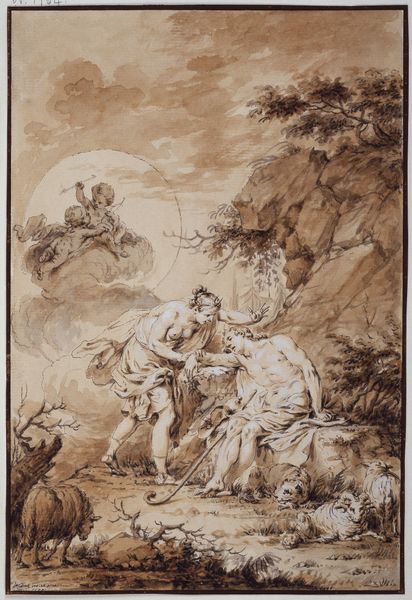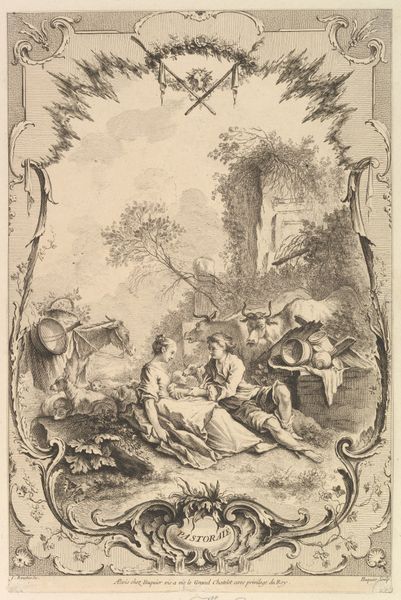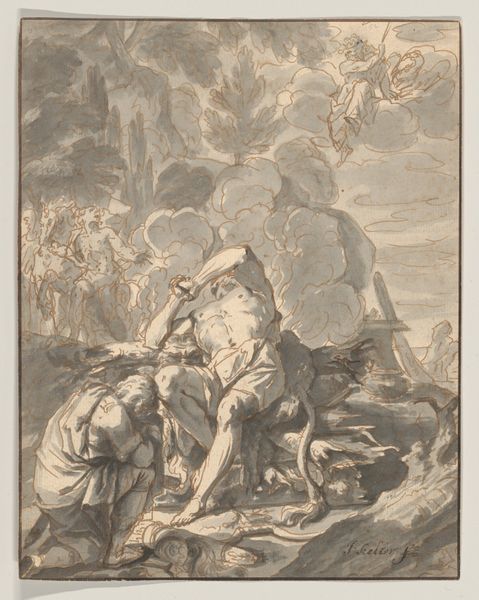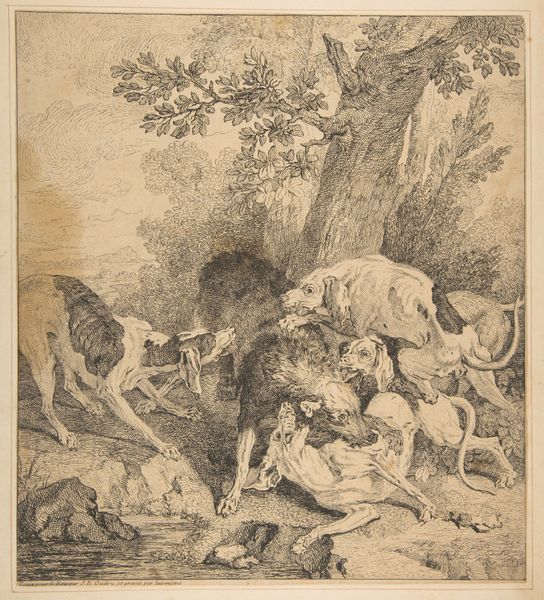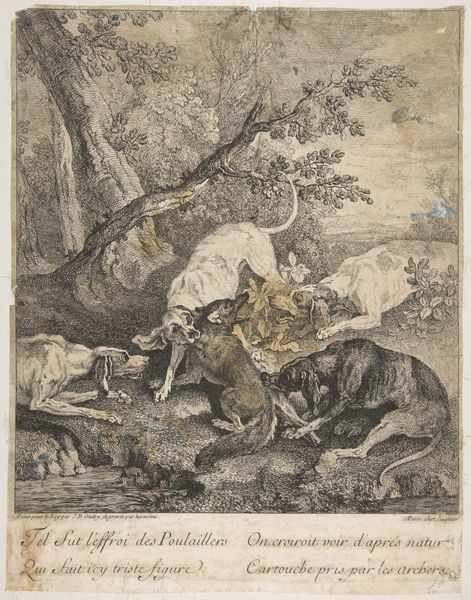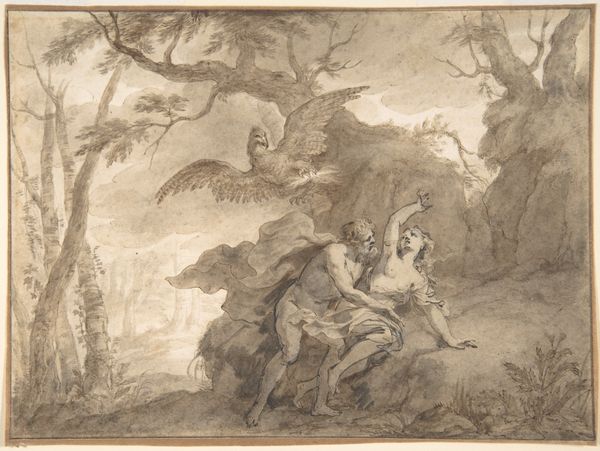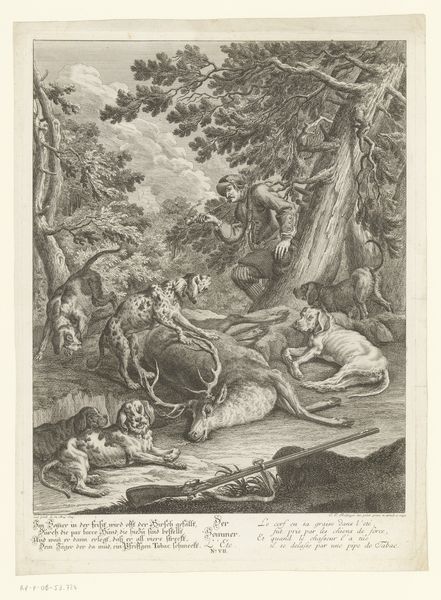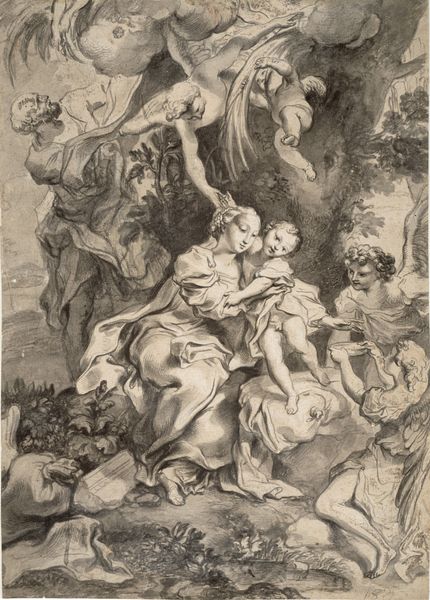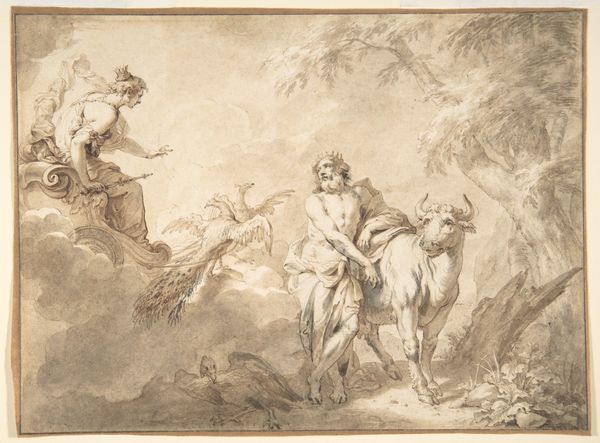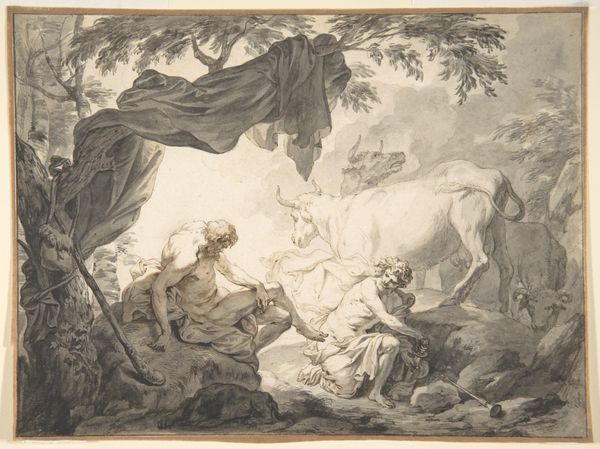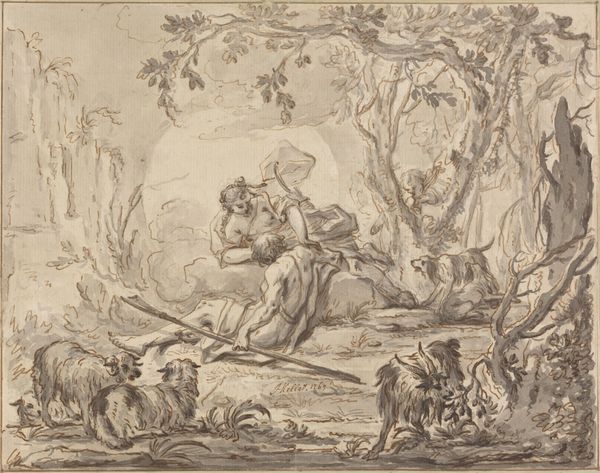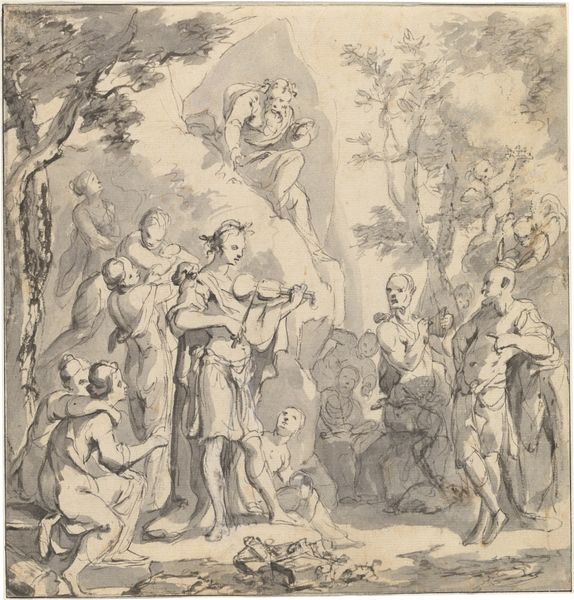
Copyright: Public Domain
Curator: Before us is "Venus and Adonis," an ink drawing completed in 1778 by Januarius Zick, currently residing at the Städel Museum. What's your initial reading of this tragic scene? Editor: Stark. A landscape washed in sepia tones sets a somber stage for this depiction of mortal grief. The light catches the distressed figures of Venus and her companions, accentuating their despair amidst what looks like a divine exit above. Curator: Absolutely. Zick masterfully captures the emotional weight of Ovid's tale. Venus, in her desperate attempt to revive Adonis, echoes timeless motifs of loss and lament. The symbols of love turned to mourning—Cupid departs in his swan-drawn chariot as Adonis lays prone with his hunting spear discarded beside him. Editor: The texture achieved with the ink wash creates an almost palpable sense of immediacy. See how the hatching builds form and implies shadow, guiding the eye right where it is needed most. But look how softly rendered is the swan-pulled chariot; do you think it a device to separate the earthly pain below from divine indifference above? Curator: Precisely. The presence of Cupid and his chariot pulled by swans reinforces that aspect. Venus' powerlessness to intervene against fate becomes poignantly human in the composition’s dual realm. Consider the swan—traditionally, a symbol of love. Its detachment here enhances the profound sense of abandonment that love, seemingly, can bring about. Editor: This image makes clear the artist's debt to Baroque aesthetics through its heightened emotion. The landscape itself becomes an active participant, framing and amplifying the central figures' torment, yet its formal constraints hint at a measured performance of grief. Curator: The performance of grief, precisely! These figures were born in a culture of formalized gestures and highly symbolic modes of visual communication. The image also hints to me that even idealized beings are helpless against a merciless destiny—a sentiment still keenly felt today. Editor: The controlled strokes and sepia wash also remind me of a controlled, historical re-imagining; Zick doesn't aim to relive the raw, impulsive emotion but instead offers it, filtered through an eighteenth-century sensibility, for careful observation and contemplation. Thank you, Januarius. Curator: An excellent summation, pointing to our engagement with classic myths and their enduring reflections on our human condition.
Comments
No comments
Be the first to comment and join the conversation on the ultimate creative platform.
